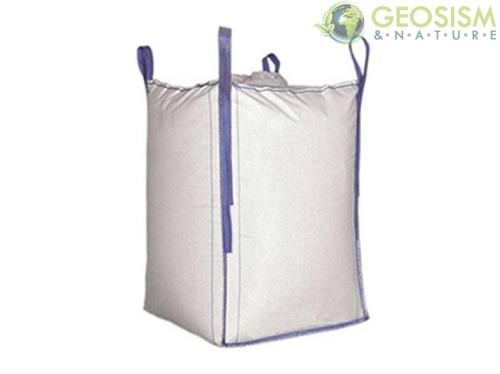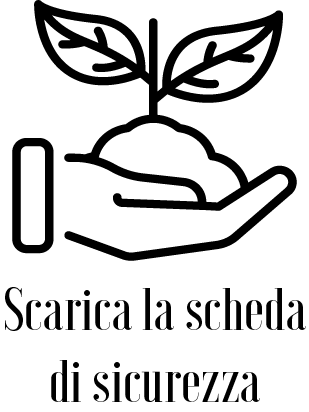Zeolite based on Chabasite and micronized Phillipsite, less than 20 microns (500 kg big bag)
MICRONIZED CHABASITE AND PHILLIPSITE-BASED ZEOLITE, LESS THAN 20 microns (500 Kg BIG BAG).
AMENDANT AND ENHANCER OF THE NATURAL DEFENSES OF VEGETABLES
Dried and sterilized in the oven at 200°C for 20 minutes.
The product adheres perfectly to surfaces; its cubic crystalline microstructure makes the surfaces particularly rough making them unusable for insects and fungal attacks. Drying increases its hygroscopic capacity and facilitates the healing of fruit and vegetables. He has no shortage time. It has a high cation exchange capacity. It protects the leaves from heat stress and cold stress, reducing the temperature range.
Group of minerals consisting of 52 mineralogical species chemically defined as "hydrated aluminosilicates of alkaline and/or alkaline-earth elements" (essentially, Na, K and Ca) and structurally constituting the tectosilicate family with feldspars, feldspathoids and silica minerals. In this family of silicates, the primary structural units, tetrahedrons [(Si,Al)O4], are linked together in the three directions of space to form three-dimensional scaffolds resulting in a tetrahedral cation (Si, Al) to oxygen ratio of 1: 2.
Unlike what occurs in other families of silicates where the same structural units are isolated (nesosilicates, e.g. olivine), connected in a single direction (inosilicates, e.g. pyroxenes) or in two directions (phyllosilcates, e.g. clay minerals ), the three-dimensional tetrahedral scaffolding of tectosilicates gives rise to "open" structures due to the presence of extra-tretrahedral cavities of increasing volume from feldspars and silica minerals to feldspathoids and zeolites.
The three-dimensional tetrahedral scaffold of zeolites is "very open" (low tetrahedral density) and, as such, has large internal cavities (from 20 to 50% of the crystal volume) communicating with each other and with the outside through molecular-sized channels (2.5 to about 7 Å; 1 Å = 10-8 cm).
In their natural state, cavities and channels are occupied by cations (Na, K, Ca) and water molecules. The cations, necessary to balance the negative electric charges of the tetrahedral scaffold due to the partial replacement of Si4+ with Al3+, being weakly bound to the tetrahedral scaffold, enjoy a certain freedom of movement and can exit, through the channels, from the cavities and therefore from the crystal only if replaced by other cations carrying the same number of positive electric charges.
This property, known as "cation exchange capacity" (CSC), has an intensity (expressed in meq/g) that increases with the increase of the Al content in the tetrahedra and varies from about 2 meq/g in Al-poor zeolites (clinoptilolite , ferrierite mordenite) at 3-4 meq/g in Al-rich zeolites (chabasite, phillipsite).
The water, from 10 to 20% by weight depending on the zeolite species, can be easily and more or less continuously removed by heating below 300-350°C with no or modest modifications of the tetrahedral scaffolding.
The zeolites thus dehydrated have a large internal surface (up to a few hundred m2 per gram of substance) available to still host water molecules or other molecules with natural or induced polarity. The dehydration-rehydration process is almost infinitely reversible and the absorption of polar molecules takes place according to a strict "selection" based "firstly" on the size of the molecules and, secondly, on their degree of polarity.
The material is sterilized in the oven up to a temperature of 200°C for 20 minutes, the finer and dustier part has a high sterilizing power against fungal pathologies (molds and fungi).
AVERAGE CHEMICAL ANALYSIS
Determined by X-ray fluorescence and loss on calcination
SiO2: 52.0%
Al2O3: 17.0%
K2O: 6.1%
Fe2O3: 3.6%
CaO: 5.7%
Na2O: 0.6%
TiO2: 0.5%
MgO: 2.3%
H2O (Structure lost above 120°C): 12.0%
MnO: 0.2%
P2O5: 0.3%
TECHNICAL FEATURES
DEFINITION: POTASSIUM, SODIUM AND CALCIUM SILICATE
Volcanic rock with high cation exchange and water absorption capacity due to the prevailing content of chabasite and phillipsite ?tectosilicate? minerals and lithological texture;
QUALITATIVE-QUANTITATIVE MINERALOGICAL COMPOSITION: (in % with standard deviations) determined by X-rays with the Rietveld-RIR method (Gualtieri, 2000): chabasite 60 ± 5; phillipsite 5 ± 3; k-feldspar 4 ± 2; biotite 2 ± 1; pyroxene 4 ± 1; volcanic glass 25 ± 5;
CHABASITE [(Na0.14 K1.03Ca1.00Mg0.17)[Al3.46 Si8.53O24] 9.7 H2O] AND PHILLIPSITE CONTENT: 65 ± 5%;
HEAVY ELEMENTS: quantity (ppm) released by elution according to the IRSA-CNR procedure (1985): Pb 10; As 5; CDs 2; Zn 20; Cu tr;
pH: 6.9 - 7.1
HIGH CATION EXCHANGE CAPACITY: 2.1 ± 0.1 meq/g with marked selectivity towards cations with low solvation energy (NH4, K, Pb, Ba)
HIGH STRUCTURAL CRYPTOPOROSITY: from 20 to 50% of the crystal volume;
REVERSIBLE DEHYDRATION: dehydration (endothermic process) - rehydration (exothermic process) infinitely reversible and therefore potential to attenuate the positive and negative peaks of the degree of humidity and ambient temperature;
MOLECULAR SIEVING ;
WATER RETENTION: 30-40% (w/w) depending on the granulometry;
MECHANICAL RESISTANCE ;
PERMEABILITY ;
BULK DENSITY: 0.70 g/cm3 ? 0.90 g/cm3 depending on the granulometry..
FUNCTIONAL CHARACTERISTICS AND FIELDS OF USE
? powder treatments: approximately 6-8 kg per hectare in addition to cupric or sulfur salts, alternatively 30 kg per hectare of material as such;
? horticulture and fruit growing: it is used in doses of 2-5 kg every 500-600 liters of water per hectare of land, from post-flowering repeat the treatment every 10-15 days depending on humidity and rainfall;
? viticulture: it is used at doses of 3 kg every 500 liters of water per hectare of land, to treat the bunch during the veraison phase and beyond with 2-3 interventions;
? floriculture: it is used in doses of 2 kg every 500 liters of water per hectare of land, treat 2 times a week;
? fertigation: for all crops, associated with other fertilisers, it is used in doses of 3 kg every 10,000 m2 continuously, to be evaluated in the field and on site with the retailer.
FURTHER CLARIFICATIONS AND INFORMATION ON THE USE OF THE PRODUCT
For further information on the use of the product, it is advisable to download the safety data sheet. In addition to the aforementioned data sheet, the pdf file also contains research conducted by Prof. Elio Passalia, Full Professor of Mineralogy at the University of Modena which demonstrates the effects of using this product on crops.
NB: MATERIAL AVAILABILITY
The material is subject to availability, it is usually taken directly from the manufacturer in the quarry and shipped to the customer in order to always have a clean product in excellent condition. We therefore ask our kind customers to check availability and delivery times by contacting Geosism & Nature sas













